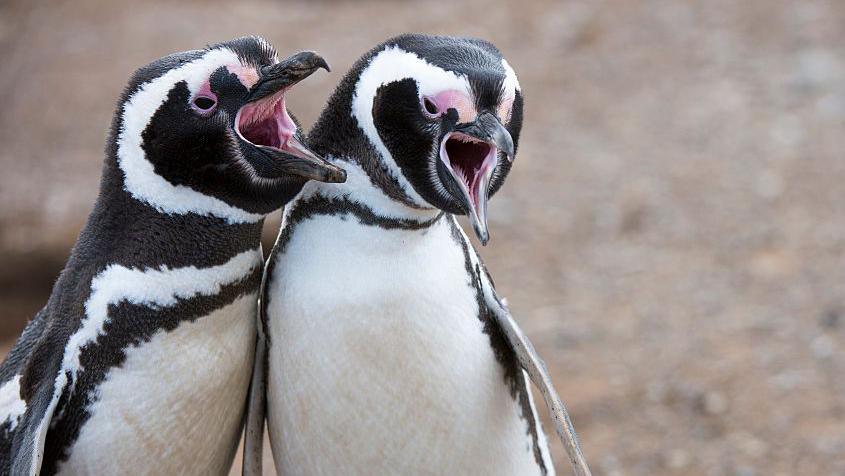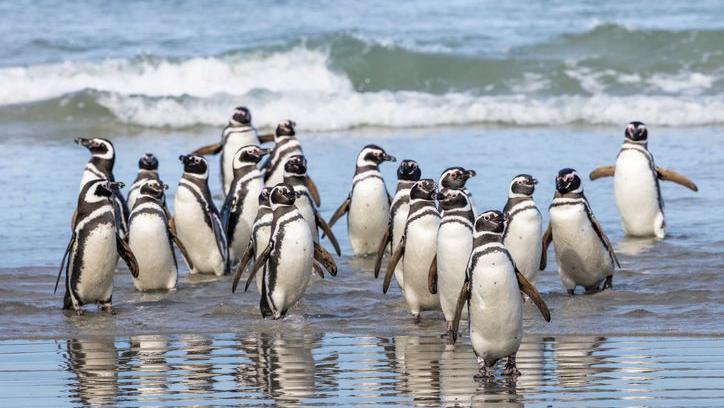Some penguins ride ocean waves to save energy and find food

- Published
Penguins are known for being fantastic swimmers, and have developed plenty of helpful features to help them live in the water.
Their body shape and webbed feet make it easy for them to move underwater and their oily feathers create a water-tight layer.
But new research shows that they could also be smarter travellers than previously thought.
Scientists have found that instead of swimming, magellanic penguin ride ocean currents and tides in order to save energy and find food.
More animal news
First ever snow leopard cub born at Chester Zoo
- Published24 July
Rare dwarf kiwi spotted in New Zealand
- Published23 July
Why are these dolphins wearing sponges on their noses?
- Published17 July
What did scientists find?

The study involved an international team of scientists, led by the Max Planck Institute of Animal Behaviour and involved researchers from Swansea University in Wales.
Experts tracked 27 adult Magellanic penguins during their return trips from foraging in the ocean off Argentina in South America.
The team used small high-tech tracking devices with GPS and compasses, as well as detailed ocean current information.
The team were surprised to discovered that instead of swimming in a straight line back to their nests, the penguins often followed curved paths shaped by the tides.
These routes helped the penguins to conserve energy and take advantage of feeding opportunities along the way.

Co-author of the study, Professor Rory Wilson from Swansea University's Animal Movement Lab, explained that the penguins adjusted their swimming direction depending on the strength and direction of the currents.
He said: "In calm water, they headed straight for home, but when the currents were stronger, they allowed themselves to drift sideways. This made their journey longer, but less tiring."
Experts found that this strategy also gave the penguins more chances to feed.
"The penguins were observed diving and foraging for food during much of their return journey," Professor Wilson added.
The team said that their finding could provide a better understanding of how other marine animals, such as seals, turtles, and seabirds, may respond to unpredictable ocean conditions.
